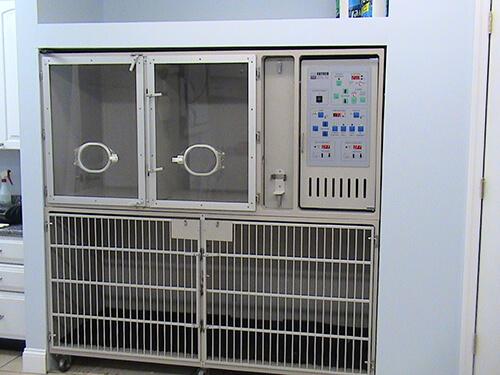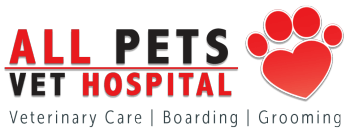
If your pet exhibits symptoms, such as vomiting with or without blood and/or blood in the stool, or if there is a foreign body in the esophagus, then an endoscopic exam can help diagnose the problem and, in some cases, resolve it.
Veterinary Endoscopy
Veterinary endoscopy is a gentle noninvasive procedure for the diagnosis and treatment of upper and lower gastrointestinal (GI) tract problems. With an endoscope, we can perform a more complete, nonsurgical examination of the GI tract, including the esophagus, stomach, and some areas of the intestines. We are also able to perform colonoscopies.

In 2006, Dr. Alsamadisi trained at The Virginia-Maryland Regional College of Veterinary Medicine in gastrointestinal endoscopy. This training allows him to use the endoscope to visualize areas that are normally not accessible without invasive surgery.
The scope is equipped with a lighted camera and pictures are transferred to a monitor to be evaluated. Using the scope, we can diagnose gastrointestinal disorders, cancerous growths, polyps, and more.
The endoscope can also be used to obtain a biopsy of potentially infected or cancerous material. The endoscope serves as the "eye," allowing us to obtain the best possible sample or biopsy for evaluation. This procedure is helpful in diagnosing malignancies in the GI tract as well as GI disorders, such as inflammatory bowel disease. The pictures and biopsies obtained with the endoscope can then be sent to specialists for further evaluation.
We can also use the endoscope to aid in the removal of foreign bodies. A foreign body is anything that "does not belong" in the animal's GI tract. Often, animals swallow things that they should not, including toys, buttons, sewing needles, string, and even pantyhose. Using the endoscope as a guide, we may be able to remove such objects rather than resorting to major surgery.
Revolutionary
This equipment has revolutionized human medicine and surgery. It is likely to do the same for veterinary medicine. We are now able to do exploratory surgery and take biopsies in the abdomen, chest, and joints without the necessity of invasive large-incision surgery.
With the flexible scope we are able to view, biopsy, and remove foreign bodies from the air passageways, lungs, stomach, and small intestine. This significantly reduces the risk of long anesthetic periods and the pain and discomfort of a large incision for your pet.

